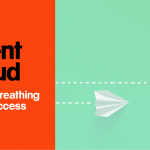I realise its not quite the start of the year….but with 11 months and 1 week still left of 2020, I feel we (of Sol-Tec) still have time to weigh in with our thoughts and opinions of what’s hot on the horizon in the world of cloud this year.
So, I asked some of our leading cloud consultants and architects (and one Marketing Consultant – for balance!) to dust off their metaphorical crystal balls and reveal their take on the tech trends that will shape 2020. Read on to hear what they had to say, starting with the boss.
1. An Increase in the Adoption of Kubernetes
Paul Collins, CTO
I believe we will see the popularity of Kubernetes continue to grow. As a vendor agnostic platform for microservice-based applications, it’s appealing to both developers and operations teams alike. Whilst it’s certainly true that Kubernetes can simplify development, operations and scaling through its automation capabilities, I think it’s fair to say it can be a complex platform to operate, something early adopters have no doubt found out.
But today, Microsoft and all major cloud providers have a fully-managed Kubernetes service offering available. This will allow the next tranche of organisations adopting Kubernetes to realise the benefits the platform can bring without having to take on the overhead and complexities of managing their own environment.
Whether this helps with vendor lock-in is another question? I do believe the opportunity and benefits that can be realised far outweigh the risk of lock-in.
Outside of Kubernetes itself, I am sure there will be some interesting activity in the container space this year. With a plethora of container-based start-ups offering innovative solutions, the big cloud providers will be circling to make M&A moves to strengthen their containerisation offerings.
2. An Increasing trend towards PaaS
Barry Sharpen, Azure Consultant
At the start of the last decade, cloud computing was in its infancy. Now, 10 years on, it has become the default platform to host your applications and many organisations have migrated to the cloud. These days, the trend is more towards optimising cloud usage to maximise business benefit, while reducing costs. Licensing, refactoring apps and DevOps are all areas that help drive cost-efficiencies but for the purposes of this blog, I want to focus on a quick win.
Microsoft SQL is the data platform with the largest market share. Many organisations have migrated their on-premise SQL servers to Azure and while this was the best approach at one time, these days there are plenty of other SQL cloud deployment options from Microsoft worth opting for. Examples include Microsoft’s fully-managed SQL database and SQL managed instances. The latter offers near 100% compatibility with on-premise SQL servers, whilst reducing cost and managing complexity.
And therein lies my prediction. The trend towards platform as a service (PaaS) will almost certainly continue to gather momentum in 2020 and throughout the next decade.
3. A Tightening in Cloud Security Practices
Ryan Williams, Cloud Solutions Architect
I predict an increase in cloud security practices. The public cloud has received some bad press from historic data breaches. Who remembers the 200,000 CVs stored on Amazon S3 buckets that were exposed online at the end of last year? In fact, Norton reported an increase of 54% in reported security breaches in the first half of 2019, compared with the same period in 2018!
These increases in data breaches and cyberattacks on the public cloud have demanded a shift in mindset from cloud providers and customers alike. Microsoft has been investing over a billion dollars a year in cybersecurity and rolled out plenty of new services in this genre last year, including Azure Sentinel, Azure Bastion, 365 Insider Risk Management and Cloud Endpoint Protection. (The last one is really cool. ATP-managed devices will be completely locked out of company cloud services if suspicious behaviour is detected on the endpoint). AWS has also released new security-focused services, such as improvement to their Key Management Service.
However, public clouds have a shared responsibility model. What this means is that while adding new security features and changing default settings on services to put security first are essential, they must also meet the concerns of their stakeholders head on. “How do we make sure we don’t have a data leak? Are we encrypted at rest? Are we encrypted in transit?”.
The fact is, humans will make mistakes. For this reason, it is important to put education first and engage with experts. Major cloud providers offer security certifications in their respective clouds and partner competencies that will help you prove to your customers that your company is invested in the education of security, on your public cloud of choice.
4. Event Driven Operations On The Rise
Edward Douse, Azure Architect
I have confidence that ‘Event Driven Operations’ will become more popular and mature in 2020.
We have recently seen a rise in use of microservice-based architectures, adoption of Agile and introduction of DevOps and its culture; all of which promote smaller, purpose-built components, that facilitate re-use and sharing.
As these modern applications and services are developed, operations teams need a means of creating effective, proactive and reactive processes that can work ‘with’ these services to provide the right level of support, functionality and integration with business process. As the demands for speed and performance grow for the service, so do the demands on the operational teams.
Serverless, microservice-based technologies such as Azure Logic Apps and Functions can easily be created and composed by operations teams using familiar modern tooling such as PowerShell, JSON, and VSCode. These provide efficient, effective and fast responses to events generated by the services they are supporting. Combine this with events from the cloud platform itself and operations teams can craft clear and concise processes that are automated, repeatable, effective, and monitored.
5. Integration of AI with Cloud
Adam Jamal, Azure Consultant
With Garnet suggesting 83% of enterprise workloads will be in the cloud this year, cloud isn’t the new kid on the block anymore; it’s just the status quo. The next trend will be AI and its integration with cloud computing and applications. With this integration becoming deeper, we’ll see a more intelligent delivery of applications to automate and improve many aspects of business such as sales forecasting, supply optimisation and even personalised training. With AI powering operations driving down costs, we’ll see pricing wars escalate between the three top cloud providers.
As Ryan Williams points out above, security will see a big lift this year. More often than not, security breaches can be attributed to unintentional configuration issues and a lack of administrative controls. The damage an administrator can do to an on-prem server is limited i.e. that server. Now, with cloud, we’ve seen organisations put sensitive data in Amazon S3 and suffer breaches as a consequence. With breaches increasing in complexity and severity, Cloud Service Providers will take the time to invest more in this space. The global 2019 spend on cybersecurity was approximately $127 billion dollars but still, the cost of cybercrime exceeded a trillion dollars. With this in mind, I suspect improved tools, analytics and machine learning will prevent the human element from being able to deviate from BP and instead, admins will be given the option to do it the right way, based on sophisticated algorithms.
6. An Increase in Cloud Hybrid Services
Adam Jamal, Azure Consultant
I also think we’ll see an increase in cloud hybrid services from AWS and Google to compete with MSFT Azure and Azure Stack. As hybrid seems to be most enterprises comfort zones at the moment, this could see real adoptions from Google and AWS, making the market more competitive than ever.
7. Improve Measures to Reduce the Environmental Impact of Cloud.
Vanessa Collins, Marketing Consultant
I’m no Azure expert I know, but I thought I’d wade into the conversation and offer one final, not so techie viewpoint, so bear with me! A move to the cloud has long been extolled to reduce the carbon footprint of your business through improved efficiencies driven by economies of scale. However, in tandem with these declarations, there’s also been a lot of talk about the soaring carbon emissions of data centres. The powering up and cooling down of these colossal edifices is incredibly energy inefficient and the reality is that even the most energy-efficient data centre can have a significant carbon footprint because they are typically getting 70% of their electricity from greenhouse-gas-emitting fossil fuels. So, while you may gain as a business, there’s every chance you’re simply shifting the environmental responsibility elsewhere.
And businesses as well as consumers are waking up to it. As environmental awareness and anxieties grow, I think our technology use and cloud will be a key industry in the firing line in 2020. Of course, had this blog come out a couple of weeks ago, before Microsoft declared its commitment to be carbon-negative by 2030, my prophecy would have seemed far more insightful.
That said, Microsoft has been leading the way on environmental solutions in the cloud space for some time. They’ve been carbon neutral since 2012, have hit their 2020 target to power 60% of their datacentres by renewable energy and are on track to exceed the 70% target they’d set for 2023.
So perhaps, 2020 is the year when other CSPs will be persuaded to follow suit.
It may be worth revisiting these insights in December to see which we predicted with Nostradamus-style accuracy and which were a little wide of the mark.
For now though, all that remains is to wish you a Happy New Year! And no, it’s not too late for that either!





